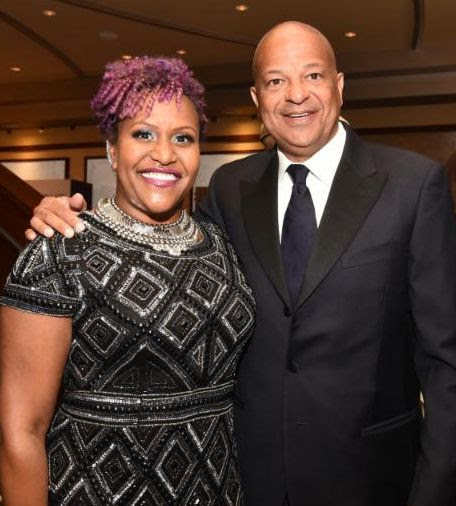Black & Positively Golden celebrates a new movement to uplift communities & inspire excellence through education, empowerment, entrepreneurship
(EMPIRE NEWS NETWORK—ENN)— McDonald’s USA announced the launch of Black & Positively Golden, a new campaign movement designed to uplift communities and inspire excellence. It highlights all things positive and focuses on stories of truth, power and pride, while celebrating Black excellence through education, empowerment and entrepreneurship. Being an active member in the communities McDonald’s serves has been fundamental to the business since its inception. Black & Positively Golden is a natural extension of the brand’s long-term commitment to the African-American consumer, and part of its larger efforts to reconnect with customers and build a better McDonald’s.
“At McDonald’s, we strive to connect with our customers by showing up in ways that matter to them,” said Lizette Williams, Head of Cultural Engagement & Experiences, McDonald’s USA. “Prior to launching the Black & Positively Golden campaign, we spent time with our African-American customer base and heard from them on what’s most important. We are leveraging this platform to shine a brilliant, powerful light on Black culture and excellence in a way that matters most to our consumers. This is the largest African-American campaign we have launched in 16 years and it continues to demonstrate our longstanding commitment to this community.”
The new campaign is brought to life in partnership with McDonald’s Black Owner/Operators nationwide. These entrepreneurs bring positive economic opportunities to the neighborhoods they serve in numerous ways, including hiring directly from the community, providing scholarships and engaging in other philanthropic activities.
“McDonald’s has long supported African-American communities. We maintain a commitment to our neighbors through various parts of our business – including scholarship partnerships with Historically Black Colleges and Universities, generational wealth-building with franchisee training and partnering with minority suppliers,” said Nicole Enearu, a second-generation Owner/Operator and member of McDonald’s U.S. Marketing African-American Consumer Market Leadership Committee. “Through our new Black & Positively Golden campaign, we aim to further connect with and inspire the African-American customer.”
Continuing the growing momentum of the brand’s economic impact and commitment to diversity, Enearu is one of 300 African-American McDonald’s franchisees representing more than 1,500 restaurants.
In an effort to reach consumers in places where they already live, work and play, Black & Positively Golden commences a yearlong commitment to the YWCA USA, supporting the organization’s Women’s Empowerment 360 Program, an initiative designed to empower women of color who aspire to be entrepreneurs. Currently, more than 70% of participants are African-American. McDonald’s financial support will help empower approximately 5,000 up-and-coming businesswomen across the U.S. with education curriculum and other tools needed for success.
The commitment with YWCA USA officially kicks off tonight, in the celebrated and largely African-American Leimert Park neighborhood with an interactive, community event at the YWCA Greater Los Angeles. The event will feature a transformative empowerment mural created by LA-based artist Enkone. Attendees will help co-create the community mural by adding their own words of affirmation. There will be an appearance by actress/comedienne Yvonne Orji, a special performance by multi-platinum recording artist Normani and more. The one-of-a-kind event will shine a light on African-American culture and demonstrate the power words have to inspire Black excellence.
“As part of our commitment to the community, we are excited to kick off Black & Positively Golden with an expanded commitment to the YWCA, an organization that shares McDonald’s core values,” Williams said. “McDonald’s has restaurants in many communities that are also served by the YWCA, and we have local ties to the organization. For instance, we’ve supported their Chicago chapter for more than 30 years. With their focus on women entrepreneurs of color, the partnership is a great fit and we’re thrilled to extend our support nationally.”
“We are honored that McDonald’s has chosen to extend their partnership with us. The community-led event and mural project is incredibly special. The mural will live at one of our centers, located in a historic, predominantly African-American community, and will stand as a beacon of positivity and empowerment,” said Faye Washington, CEO and President of the YWCA Greater Los Angeles.
In conjunction with the YWCA launch event, McDonald’s will debut the campaign with a 60-second anthem television spot on Saturday, March 30, during the 50th NAACP Image Awards. Consumers will also engage with campaign elements in some of their favorite and most trusted digital, print, radio and broadcast outlets all year long. Understanding the importance of social media for engaging the African-American audience and especially millennials, the brand launched a new Instagram channel for the Black & Positively Goldencampaign – @wearegolden, highlighting moments of positivity, exciting programs and consumer experiences, as well as people who are shining examples of Black excellence in the community. The channel also provides resources to help uplift communities through education, empowerment and entrepreneurship.
The Black & Positively Golden campaign also will be supported through a series of events throughout 2019. First up is McDonald’s Inspiration Celebration Gospel Tour set to kick off in late April, followed by consumer experiences at BET Experience and Essence Festival. In addition, Black & Positively Golden will provide $60,000 in scholarships to foster educational empowerment among HBCU students through its partnership with Thurgood Marshall College Fund. For more information visit TMCF.org/McD.
For more
information on McDonald’s new Black & Positively Golden campaign,
follow @wearegolden on Instagram.
 Westside Story Newspaper – Online The News of The Empire – Sharing the Quest for Excellence
Westside Story Newspaper – Online The News of The Empire – Sharing the Quest for Excellence









